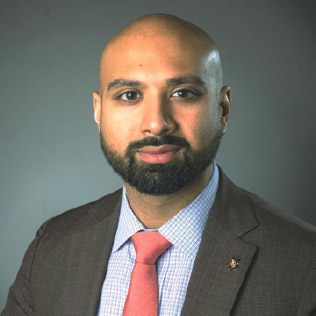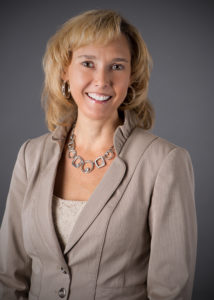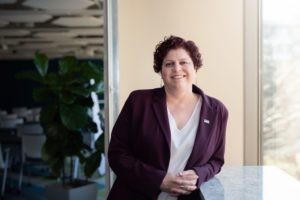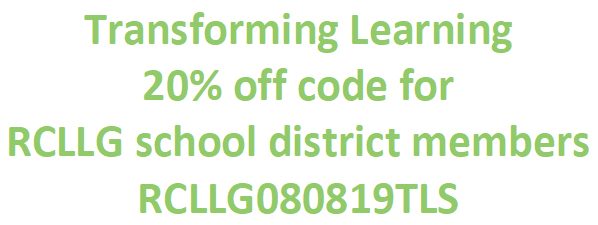
Dec 12-14, 2023 • St. Paul RiverCentre
Learn more about the 2023 Golden GOVIT award winners and finalists…
INNOVATION AWARD

A product, program or service that disrupts the current status quo and meets these three criteria:
Novelty: the degree of newness and uniqueness;
Impact: the magnitude and scope of improvement to government efficiency and effectiveness;
Replicability: the potential for replication in other government bodies or sectors.
THE WINNER IS…
Raise the Baseline App
Hennepin County Human Services
The Raise the Baseline App was created by a group that leveraged low-code/no code technology to target income inequalities in Hennepin County. The app was created to support a Guaranteed Basic Income (GBI) pilot program, a direct approach to foster financial stability for residents in need. Offering GBI is a national trend. Counties and cities are running pilots throughout the country to test its efficacy. GBI payments are transferred directly to the recipient to balance immediate needs, such as rent or food, with long-term investments, such as college or car savings.
The app automates GBI payment reports, program-related information, and data updates for the Hennepin County household recipients. Through the Raise the Baseline pilot program, each of the households receives payment for 15 months. Recipients were identified through an analysis of benefits enrollments gaps, and calculations of risk for facing a reduction or loss in public assistance benefits.
The Raise the Baseline app was developed to offer an efficient and reliable solution to coordinate processes for each household to receive their monthly payments, and to establish streamlined workflows for program workers. The app was built out as a Microsoft PowerApp and Power Automate solution and uses Dataverse as its data source. Staff have found the tool accessible, easy to use, and secure. This system helps the pilot program workers execute the following tasks:
- Manual workflows and task reminders to workers, such as when to send an invitation letter and when to follow-up and engage with recipients.
- Automate letters that need signatures via flow through Adobe eSign or encrypted email, and store these letters in the app.
- Create and track payment schedules in the app.
- Upload an automated daily .csv filed the bank issuing debit cards for recipient spending.
- Automate monthly .csv reports that outlines each enrollee’s scheduled payment and is uploaded to the Oracle system to file and modify payment schedules as needed.
Raise the Baseline received its funding from the American Rescue Plan Act (ARPA) of 2021 and is a self-contained project. Operating via low code and no code solutions, the app is upheld by the work of a diverse set of teams, including Information Technology and Records Management, Data Compliance, Economic Supports, Hennepin County Payroll, the bank issuing debit cards, the County Attorney’s Office, Communications, and administrative support teams. The pilot will explore the impact of payments on participant’s economic mobility, housing stability, employment outcomes, health and education factors, and quality of life. Pilot findings will help inform future policy and program decisions to better support working families.
FINALIST:
Special Claims Process Automation
Minnesota Housing Finance Agency
Minnesota Housing’s Special Claims process supports owners of affordable housing units facing financial risk due to program limitations on security deposits and waitlist requirements. Owners mailed in paper documents, and Minnesota Housing staff processed and tracked them. This required significant cost to mail and store documents. Communications between customers and staff were stored across multiple systems. The process was inefficient, lacked transparency and made reporting difficult. To make the Special Claims process easier for customers and staff, the Agency automated the process. We created a secure, online digital solution to capture and store documents, track claims and generate notifications.
Read the Full Project Description
Minnesota Housing’s Special Claims process supports owners of affordable housing units facing financial risk due to program limitations on security deposits and waitlist requirements. It was originally a manual process where owners mailed in paper documents and Agency staff processed and tracked them. To make the Special Claims process easier for customers and staff, the Agency automated the process. Our goals were to eliminate reliance on paper, consolidate data, provide transparency and support customer self-service.
We identified five major steps in the process:
1. Create claim
2. Provide documentation
3. Submit claim
4. Process claim
5. Notify customer
Our objective was to provide an automated solution for each of the steps. We built the solution on the Salesforce platform. Each customer receives a unique login and password to access a secure, online customer portal. They can view their properties to create new claims, check the status of claims, and access program templates and trainings. The customer portal supports all four of our goals for the project. In the portal, users upload files, which are systematically date and time stamped. The system supports file versioning if resubmission is needed. Files are indexed to the claim so they can be retrieved for processing or audits. This feature eliminates the need for storing and manually tracking paper documents. The file management feature supports our goals of eliminating paper and consolidating data. From claim creation to final decision, the system assigns and displays the claim’s status. Statuses show customers the work in process and staff what new submissions will be coming their way. They also allow the system to set due dates and deadlines to complete tasks in the claims process. Automated dates improve overall adherence to program and policy rules for processing timelines. Claim status and tracking supports our goals of consolidating data, transparency and customer self-service. Using claim statuses and system-generated dates, automated workflows notify users when key tasks are complete, when due dates are approaching, and when data missing or incorrect. Automated notifications eliminate the need to monitor the portal for new tasks or assignments. Automated data validation provides online guidance, so customers only submit claims with complete, correctly formatted data. It eliminates the need for Agency staff to follow up with customers about missing or incorrect data. Workflow automation supports our goals of transparency and customer self-service. Agency staff provide a final notice of the claim decision to the customer. Dynamic templates allow staff to create these notices with a single click within the claim. The templates ensure the Agency provides consistent messaging. Claim-specific data is automatically populated to eliminate entry errors. Most importantly, the notification is sent from and stored with each individual claim. Customers and Agency staff can retrieve notifications at any time for audit or review. Notification templates support all four of our goals.
The Special Claim solution deployed in August 2022. By January 2023, we had 100% user adoption. The Agency has not received a paper Special Claim this year.
FINALIST:
Securing St. Cloud Citizens
City of St. Cloud
St. Cloud had nine different security camera solutions, ranging from 10 to 15 years old, with outdated technology. Nine different partners maintained the camera environment with different maintenance contracts, causing downtime when software security patches were released. With 18 sites and failing cameras, the IT department had to run the videos at court.
Read the Full Project Description
Implementing a Modern and Scalable Solution After a thorough RFP process, HBS was selected to implement a modern, scalable, and user-friendly centralized video security solution, powered by Verkada.
The solution included IP-based video surveillance with all cameras securable and centrally managed, a “Single Pane of Glass” for management, cloud-based storage with the ability to expand and controlled access by department through integration with Active Directory. The police officers access video feeds via a smart phone/CAD system, and all city departments can monitor video footage more efficiently. Revolutionizing St. Cloud’s Improved Security and Efficiency St. Cloud is now more secure and efficient with optimized police patrol in peak zones and times. The Verkada solution provided the ability to easily find and share desired video footage by email or link, saving thousands of hours of time.
Eric Schwegel said, “The communication at the stations has been improved immensely with this system…We have been able to notice times and trends in crime/locations to help officers be where they need to be.”
SERVICE AWARD

The delivery of digital information and transactional services that makes a difference in the lives of citizens. Nominations should meet these criteria: a strong focus on the end-user’s accessibility and experience, a high level of citizen engagement, incorporation of the technologies used by today’s citizens, and timely, informative content.
THE WINNER IS…
MN Unemployment Insurance Responsive Web Rewrite
Minnesota Department of Employment and Economic Development
Several years after completing the core system implementation, DEED undertook a large portfolio of projects that started in February of 2020 – prior to the worldwide COVID pandemic – to improve and enhance program features and functionality. The portfolio included a wide range of technology upgrades, functionality additions, and were responsive to the on-going program and system evolutions within unemployment insurance. DEED partnered with Deloitte to analyze current processes, identify new requirements, and design, develop, and test new features. DEED’s primary objective for each initiative was improve efficiency and customer service while maintaining modern technical relevance and responding to Federal and State program changes.
These include the following program enhancements:
- “Lift and Shift” Application and Performance Testing to AWS Cloud
- Upgraded Graphical User Interface-Presentation Layer, Accessibility and Multi-Language Support
- Correspondence Messaging Solution
- Application Error Management
- Security Updates and Issue Remediation
- Program Integrity/Fraud Support
- Automated Testing
- FileNet and WebSphere Upgrades
- Login Solution Upgrade
- Scheduling Upgrade
- Performance Test Management
- Automated Environments
- Integrity Cross Match
- STRUTS to SPRING MVC Conversion and Upgrade
- Quarterly Check for Standard UI Program
- Enhanced Weekly Payment Requests
- Enhanced Deductible Income
- Challenge Questions
- Wage Detail Redesign
- Database Purge Processing
- Increased Flexibility in Supplemental Payments
- Improved Error Handling
- Integrate/Update Appeals Processes
- Employer Experience Updates
- Sign-On/Login Security Updates
- Abstract Tax Rates / Flexibility
- FileNet upgrade and TIFF to PDF document conversion
The initiative, which included new functionality releases approximately every 6 weeks starting in 2021 with a major go-live in March 2023, allowed Minnesota to respond to rapidly changing legislative and policy initiatives all while also improving service to employers and citizens through the economic upheaval of the pandemic. Further, the modernization effort took into consideration Minnesota’s unique policies and business imperatives, leveraging system design and development methodologies that support the evolution of Minnesota’s UI system to address future needs.
Value delivered & impact
The unprecedented impacts of unemployment, rapidly changing programs to support the volume of claimants, and the active fraud attempts brought many state unemployment systems to their breaking point. In Minnesota, however, the modernized UI system with effective program updates allowed them to maintain service in a timely fashion, positioning Minnesota to be a leader among states in providing timely payments to unemployment insurance claimants. Even with the increased work volume, Minnesota DEED and Deloitte were able to implement a large portfolio of system upgrades. These efforts allowed for an efficient response to real business and technical challenges all while maintaining the highest user volume in program history. The projects focused on improved customer service and usability for employers, third party agents, claimants, and staff; increased system flexibility; and reduction of technical debt.
In addition to facilitating DEED’s compliance with new legislation, this and other functionality added during the UI System Enhancement Project has reduced manual work for UI program staff, allowing increased productivity and flexibility to better serve DEED’s claimant and employer customers. Further, after three years of deployments, DEED analyzed their post-implementation defect rates to be less than 0.6 item per deploy.
FINALIST:
Voluntary Use Naloxone Solution
Hennepin County Information Technology
With its new status as an over-the-counter drug, Naloxone (Narcan) access recently changed for staff who voluntarily (not part of job duties already) wish to have access to supplies purchased by Hennepin County. IT Enterprise Development created a solution to facilitate the process of attestation and distribution that allows access to staff who can administer the emergency treatment to residents in need. The team automated the request and approval process by leveraging the capabilities of Microsoft Power Apps, Power Automate, Power BI and Dataverse. Thanks to the collaboration of many teams, the solution was developed in only two weeks.
Read the Full Project Description
Opioid overdoses and deaths continue to rise in Hennepin County. Naloxone, trademarked as Narcan, is an opiate antagonist used to counteract the effects of an opiate overdose. In reaction to the national opioid epidemic, the Minnesota Legislature enacted “Steve’s Law” (also known as the Good Samaritan law) in 2014. This law serves the goal of reducing deaths related to opiate overdose, by allowing for more widespread distribution and administration of naloxone by non-healthcare professionals.
Following an April 2023 Hennepin County Board briefing on opioid use, Human Resources, IT and Central Services came together to develop the naloxone voluntary use program to provide naloxone and training to staff who voluntarily choose to administer naloxone on the job. This optional program is intended for staff who have direct interactions with members of the public that are at risk of an overdose. Any Hennepin County staff member who is required to or voluntarily chooses to administer naloxone on the job must complete department and/or county required training, receive the naloxone directly from the county, and comply with all department and county procedures.
In June of 2023, IT Enterprise Development developed a solution in just two weeks to facilitate the process of attestation and distribution that allows access to staff who can administer the emergency treatment to residents in need. The team automated the request and approval process by leveraging the capabilities of Microsoft Power Apps, Power Automate, Power BI and Dataverse. The forms track the voluntary use naloxone program from tracking the attestation process, which includes staff acknowledging they will follow the requirements of the policy and procedures, to acquiring and using county purchased and provided naloxone. If a new staff member tries to order it checks for attestation and training before allowing them to gain access to the drug. The app manages inventory control and monitors the drug’s use. Improvements and new features continue to be made to the solution. The program uses four self-service lockers for employee pick-up using a QR or numeric code in a badge access only collaborative work center. Because of the agility of the development team and partnership between county departments, Hennepin County was able to deploy their naloxone voluntary use program before major pharmacy chains like CVS and Walgreens.
Since its inception, 168 requests have been successfully filled via the naloxone voluntary use program solution to 18 departments. While the drug has yet to be used to revive a resident in the voluntary use program, staff throughout the county are more prepared to administer this life saving measure.
INDIVIDUAL LEADER AWARD

An individual who champions and implements innovation, inspires collaboration, is focused on improving service, and demonstrates a personal commitment to advancing the professional and career development of him/herself as well as others in their agency.
THE WINNER IS…
Melissa Shaw
Division Manager, Enterprise Development and Architecture
Hennepin County Information Technology
Melissa Shaw is the Hennepin County Information Technology Division Manager for Enterprise Architecture and Enterprise Development. In her role, Shaw manages sixteen direct reports who supervise an additional eighty-five employees, including application developers, GIS professionals, and enterprise architects. This is a diverse portfolio of responsibilities that Shaw herself advocated to lead because she believed it would offer greater clarity and effectiveness for IT clients. “Melissa has a way of articulating thing in a positive, fact-based way. She challenges the status quo,” said one of her direct reports, June Burrows, who manages developers.
Shaw is a newer leader in the Information Technology department joining in 2022, but she has experience working in other Hennepin County lines of business in technology leadership and project management roles since 2015. She built a track record of results, gaining great political and business savvy in complex settings with both IT and resident services. Burrows explains, “She brings fresh eyes and can see the gaps in work because of having worked in a business line.” Her biggest accomplishment in her new role is pulling together the workstreams of four IT groups: Enterprise Architecture, Enterprise Development, Business Relationship Managers, and the Project Management Office. The groups now share a single Azure DevOps status board and backlog. This allows initiatives to be coordinated from business need through the intake process to value realization.
Bringing these work areas together could have wreaked havoc, but not under Shaw’s leadership. Ryan Grassfield, the PMO manager shared the subtle, but persistent approach that Shaw brought to the effort, “Melissa spent two months, in two-hour meetings every week, talking about the individual backlogs, and started asking these thought-provoking questions. She inspired us to think about and see the possibilities. You hear about people who plant the seeds? She planted a whole dang forest!” Grassfield points to Shaw’s fearlessness in her approach. “She’s not afraid to ask questions that other leaders can’t or won’t. She brought staff in to do mock-ups and demonstrations and showed us another way to do things rather than telling us.” Shaw is also a champion of her largely remote, sometimes hybrid workforce. “Fun is not limited to a room!”
Shaw recently shared when asked about the challenges and victories of working remotely. “I have enjoyed creating and being a part of my remote work community. We have established a meeting culture that encourages team bonding, intentional time, and trust. I trust my employees more to be productive team members amongst increased flexibility in the remote workspace.” Her manager, Chief Technology Officer Craig Troska, cites Shaw’s talent of growing employees, “She’s good at finding their strengths and passions and matching that with an opportunity.” Troska also cites Shaw’s ability to manage an incredibly diverse stack of responsibility. “She has great consistency, commitment, responsibility – tracking disparate work. She never drops the ball – her follow through is great.” Her sights are set on continuing to get work to the finish line. Shaw’s next goal is seeing improvements in prioritization and process. Hennepin County is fortunate to have this forward-thinking individual.
FINALIST:
Tara Gehling
Associate Director of Information Technology Solutions
Olmsted County
Tara has recently been named Associate Director within Olmsted County. As someone who is very deserving of this position, Tara has proven by her current and previous roles that she is deserving of this award.
Read the Full Project Description
Tara has worked in a number of roles within Olmsted County. Before her promotion to Associate Director, she was a Business Analyst where she not only supported departments within Olmsted County but was successful with a number of projects. As Associate Director, she has utilized her skill set to continue the mission of Olmsted County ITS. For example, she has harnessed her skill set in order to make sure enterprise projects maintain trajectory to their goal and be successful.
FINALIST:
Amy Cheney
CIO
City of Bloomington
Amy Cheney is the CIO for the City of Bloomington. She’s an accomplished, adaptable professional with over 25 years of experience and a proven knowledge of advanced technologies and IT strategy. She’s an integral part of the city’s Executive Leadership Team and leads internal employee committees including the IT Steering Committee, Data Management Team, Facilitation Network, and Racial Equity Action Team. In addition, Amy serves on the LOGIS Board of Directors and MN Digital Government Summit Advisory Board.
Read the Full Project Description
Amy Cheney leads a diverse team of 19 staff who provides the City with computer hardware and software and coordinates the networking and communications of systems in accordance with the City’s Information Technology Strategic plan. A Geographical Information Systems (GIS) team was added to IT in 2022. She also provides technology expertise, equipment, software, and services to meet Council’s Goals by: Build out the city’s fiber optics infrastructure. Implement initiatives defined in the Geographic Information Systems (GIS) strategic plan to enhance functions & activities City-wide. Review existing policies and procedures. Identify and implement necessary changes. Continue to provide exceptional service to support the City’s departments in technology Along with being a strong leader in the organization, Amy helps shape IT work across the region. She’s a trusted resource for colleagues and exemplifies servant leadership in her work.
FINALIST:
Rachel Horne
Business Analyst
MN IT Services
Customer-focused and data-driven leader that embraces new technologies, offers expertise in creating process documentation, tracking project metrics, and creative problem solving to address gaps and opportunities to support business needs. Articulate and collaborative self-starter. Manage large-scale projects. Expert in organizational skills; supervise multiple projects and meet quick turnaround deadlines. Areas of Expertise: ➤ Process Improvements ➤ Onboarding & Integrating Technologies ➤ Calculating ROI ➤ Training & Change Management ➤ Root-Cause Analysis ➤ Data Visualization
Read the Full Project Description
Rachel Horne is the lead Business Analyst dedicated to the MN Department of Public Safet_Driver Vehicle Services Language Translation Services Project that focuses on the Governor’s One Minnesota vision and brings language accessibility, via virtual agent, to non-english speaking MN constituents. At launch, the virtual agent service was designed to accommodate the top four languages spoken by Minnesotans – English, Spanish, Hmong and Somali.. Today, the development process has expanded to identify the top 10 primary languages spoken in the state. This research found that additional Afghan languages are needed, among others. The department now plans to expand from 4 to 30 languages in its next growth stage with a focus on languages such as Ukranian that have the greatest need by population size. From there, the program aims to support all 334+ languages spoken in the state. See more about the project here: https://www.youtube.com/watch?v=enRdZoeN1W4&t=101s Rachel was critical to getting the project off the ground and remains involved today as the project moves through its additional phases of growth to serve additional constituent needs. Rachel’s ability to remain a project champion is admirable as bringing technology innovation to a state agency requires determination and commitment to serving the communities greater good. Especially when a project gets tough! Rachel is the kind of leader who hangs in there and focuses on the positive, while simultaneously acknowledging the complexities of executing on transformational technology. Throughout the project’s lifecycle, Rachel was at the center of critical collaboration between the technology vendor partners and the state’s project team. She is often the glue that holds everyone together. Whether she is suggesting process improvement to seek alignment and ensure execution on deliverables and timelines or tackling difficult change management head she does it with a confident, clear, and calm demeanor. She is detail oriented, thorough, demands results and knows how to motivate those around her to expect and work toward a successful outcome. When I asked Rachel if it was okay to nominate her for the Golden GOVIT, she replied with, I’m not one for individual accolades but my work is representative of the team’s work and I am supportive of that… Her response didn’t come as a surprise to me because there is no “I” for Rachel in the work DPS DVS is bringing forward. From the start she has understood the critical importance of the work and its ability to unify our State around something as simple as language.
FINALIST:
Jon Eckel
Director of Enterprise Services / CIO
Chisago County
Jon Eckel has been a recognized and valuable resource for county IT for many years. He has served on the MnCCC Board for eight years and has been involved with MnCCC for more than 20 years. Jon has been with Chisago County for 30 years. He has also been involved with our Contract Advisory Panel since its inception
Read the Full Project Description
Jon Eckel has been a recognized and valuable resource for county IT for many years. He has served on the MnCCC Board for eight years and has been involved with MnCCC for more than 20 years. Jon has been with Chisago County for more than 30 years. Jon has been around for a long time, but that doesn’t mean he isn’t open to new ideas and new tools. In fact, he is often bringing new solutions and update policies to our members and other IT departments throughout the state. He is always willing to share advise, share resources, provide a starting point for a policy and advise on how to implement it. Jon has been involved with the MnCCC Contract Advisory Panel since it was formed. This committee, currently led by Jon, helps create better contracts for our MnCCC members. And, the recommended language from our Contract Advisory Panel has also been adopted by several counties. Jon has served in numerous roles in our MnCCC user groups. He provides technical and security advice to our user groups. As well as recommendations on third-party solutions. He has been an active member of MNCITLA. Jon is a great resource for counties providing important security strategies, technical advice, and support to others. He is always sharing policies, recommendations, and resources with other counties to assist them in providing better technical support for their counties. Counties are fortunate to have Jon as a resource! We are lucky to have him as part of our team!













